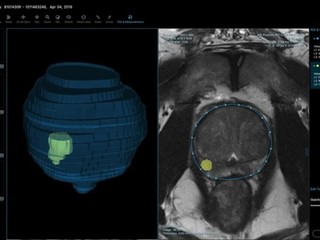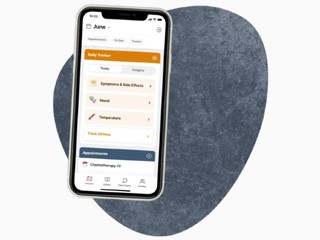Global AI in healthcare market expected to rise to $164B by 2030
The market size for 2023 was $10.31 billion
Read more... More than 1.6 million people are diagnosed with cancer in the US alone each year, and nearly 600,000 die from it, making it the second leading cause of death, according to the CDC. Yet, the way we actually treat cancer is outdated, with a lack of monitoring that leads up to 50 percent of patient symptoms and treatment side-effects going undetected.
More than 1.6 million people are diagnosed with cancer in the US alone each year, and nearly 600,000 die from it, making it the second leading cause of death, according to the CDC. Yet, the way we actually treat cancer is outdated, with a lack of monitoring that leads up to 50 percent of patient symptoms and treatment side-effects going undetected.
That's what Lavi Kwiatkowsky, founder of Canopy (formerly known as Expain), a Intelligent Care Platform (ICP) for oncology, saw when members of his family were diagnosed; he was shocked at how much of the technology that we have in our day to day lives had not permeated into healthcare, he told me in an interview. Canopy came out of stealth on Thursday with $13 million in a funding round led by GSR Ventures, with participation from Samsung Next, UpWest, and other industry leaders and executives, such former Flatiron SVP Product Geoff Calkins, and Viz.AI CEO Chris Mansi.
"We don't really know how to care for cancer or cure cancer, so what we're doing is trying to kill the cancerous cells using toxic materials, like chemotherapy or some immunotherapy, which isn't toxic but it has severe adverse events attached to it. And so, a lot of these treatments have a lot of side effects that could be dangerous," he said.
"The way it happens today is we have this brief, episodic care. A patient comes in, gets stomach therapy, chemotherapy, immunotherapy, then they go home and no one sees them for two weeks. A lot of patients are suffering symptoms in between and very often we don't learn about it. So, they just suffer and recover again and show up again. Also, they often end up in a hospital with severe deterioration due to those symptoms."
There's a better way: actually asking patients how they're feeling. A 2017 study followed 800 cancer patients for seven years, in which half the patients got a weekly email that asked them about their symptoms; those patients who got to report their symptoms not only went to the hospital less often, they also stayed on treatment longer because they were feeling better, and they lived 20% more overall.
Patient reported data
The Canopy platform has both a patient-facing app, which includes remote patient monitoring, and chronic and principal care management tools, while also working with cancer centers, providing them with oral oncolytics solutions, provider workflow tools, as well as automated reimbursement capture.
On the patient side, point of view, they start using the app, and then a nurse at their cancer center selects the protocol by which they want the patient to report. The patients then go home and if they have any issue, they can open the app, put in what's happening, and get immediate help.
If it's determined that the patient requires clinical attention but the situation is not urgent, then someone at the practice will get an alert. If it's something that could be more urgent, the app will prompt both sides immediately, and will also prompt the patient as well to seek care. Patients can also report their feelings in regular intervals after treatment, so the cancer centers can also see if there are potential issues arising.
The app depends on patients self-reporting their own symptoms, and there are a number of reasons why this works better on an app rather than in person, Kwiatkowsky told me, including that they want to be positive, as well as the fear that if they complain about their symptoms then their doctor would take their chemotherapy away.
"Also, they don't know really that we have excellent solutions today to all of the problems, or some of them even expect that you're supposed to feel poorly when you're getting cancer treatment, but it's not really the truth," he said.
Of course, when it comes to self-reported data, what's serious to one patient may not be as serious to another; when one patients says they say mild nausea, that might be accurate, while another might say the same thing but they've been vomiting all day. That's why Canopy uses technology, including machine learning, to determine what's actually going on with that patient and the real severity of their symptoms.
"You want to know how they feel and you want to find a way to know if people are under reporting. So, if someone says mild nausea, but they've been vomiting all day, a way you could capture that as is your follow up question, which will be, 'have you vomited? How many times?,'" Kwiatkowsky explained.
In the end, though, what the app is really measuring is how that particular patient feels so that it can help them feel better.
"How they feel really is the number one most important thing because if they're subjectively feeling really poorly, it doesn't matter: let's help them. That's the goal for us. In our data, the number one predictor of a patient requiring care, whether an acute visit or an ER visit, was if their personal perception of their feeling was very poor. Having a high level of distress was the number one predictor of if they're going to require further medical care."
Making cancer centers more efficient
While the company's consumer-facing app and remote patient monitoring was its first product, Canopy's actual customers are now the cancer centers themselves.
This came about organically: as it was building out its patient-facing tools, it figured out how much help was needed on the nurse's end, so it built them a decision support system which helps understand within just a few minutes minutes how to best treat a patient. This, in turn, led to the development of even more products to help cancer centers be more efficient.
"We very quickly realized that there's a lot of problems in that cancer center that were bigger than just patients. They had quality care programs, they had professional accreditations, they had payment models, they had been dispensing oral oncolytics, so chemotherapy that was oral, and all these different challenges didn't come with a software solution. And so they were using spreadsheets and manpower to tackle all these challenges," Kwiatkowsky explained.
"It became very apparent that the need was bigger than just remote monitoring. It was remote monitoring, and all of their quality programs and different help with different payment models and help capturing reimbursement and basically help with nursing and care workflows."
Canopy has now partnered with six cancer centers, some of which are nationally prominent, and it has 100 daily active users per cancer center, meaning nurses and care staff, using its software every single day as their main workflow tool. It has also helped 50,000 patients.
In terms of ROI, Canopy’s platform has demonstrated patient enrollment of 86%, engagement of 88% percent), retention of 90% at 6 months, and nursing intervention rates of 88%. This year, the company will also be publishing clinical outcomes of those patients that shows significant reductions in ER visits and hospitalizations as well.
All of this changes the company's whole selling point, said Kwiatkowsky.
"Our customers were buying an efficiency and the ability to do more work faster and more efficiently, better. And today, now that we have the clinical evidence, that's our main selling point. It's the fact that you can invest in technology that saves you time, makes you more efficient, improves financial performance of the practice under value-based care model, but most importantly, improves care," he told me.
"I can tell you without a doubt our customers today buy on improving care. They buy on the ability to improve their patients’ outcomes. And they feel strongly about that."
Every patient gets the best care
Canopy plans to use its new funding in a number of different ways, including investing in growth to meet its demand, and a better use of its data to give its clinical partners greater insights to improve how they care for patients.
It will also be investing in its technology to make treatments more personalized to each patient’s treatment and cancer.
"The beauty of what we're measuring is that the accurate data is how they feel, because you're trying to make them feel better. If they feel horrible, there's no better way to stratify nausea or pain than to ask the person how much pain they're having. There's been a lot of scientific work on this and there's a big gap between how patients really feel and how the healthcare system is able to capture that and patients are having and suffering more issues than the healthcare system is able to capture or quantify," Kwiatkowsky explained.
This feeds into the ultimate goal with Canopy, which is to make sure each patient gets the best possible care, the maximum benefit from their cancer treatment while having the best possible experience.
"We're building digital health tools for the practice that improves care, and we're taking a rigorous approach to validating and getting better outcomes for patients and rigorously validating them. So, success to me is getting to as many patients as possible and helping them maximize the benefit of their treatment."
The market size for 2023 was $10.31 billion
Read more...At Culture, Religion & Tech, take II in Miami on October 29, 2024
Read more...The company will use the funding to broaden the scope of its AI, including new administrative tasks
Read more...


